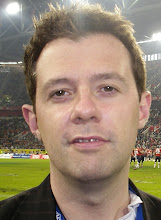(Evening Echo Publications)
It’s a rare day when you get a book that enthrals you by reminding of moments you’ve forgotten but also provides an insight into the stories that remained elusive. For those of us who grew up watching Irish basketball explode into a unique cultural and sporting phenomenon before bouncing back down to earth, the definitive book on the game’s golden era on the Emerald Isle is the perfect riposte to every bland and pointless autobiography that is begging for a place in Santa’s stocking.
Kieran Shannon, a writer for The Sunday Tribune, views history through the eyes of Cork’s biggest club but has every gym northward in his sights during the course of ‘Hanging from the Rafters’. Sub-titled ‘The Story of Neptune and the Golden Age of Irish Basketball’, it recounts the trail that basketball blazed on both sides of the border. It is true that, for so many, their first experience of a black person was when they encountered one of the gregarious professional hoopsters imported to add a touch of razzle-dazzle to a nascent domestic product. For those who landed, fresh off the plane, it was an equally alien environment.
A rare specimen, like Mario Elie (once of Killester, later of San Antonio) would go onto greater stages. Many like Lennie McMillan, Javan Dupree, Soup Campbell, and Jerome Westbrook stuck around, went native and spawned their successors. For every stalwart, there was a fly-by-night. Players who turned up, caused havoc and departed. Places like Kerry are as far from Boston as basketball goes. For some, it was a flight too far when they realised that dreams of turning out for the Celtics had been replaced by trips to teams with names like Burgerland and Jameson.
Critically, the pursuit of the best American imports knew no boundaries. If only Reggie Lewis had accepted an offer to join Ballina in place of Boston, might it all have turned out differently? Or if Blue Demons hadn’t been rebuffed in their cheeky approach for Dale Ellis? They may still have followed Elie to the NBA. Or been the next Deora Marsh. Posted to Mayo, the knock came on the rookie’s door to show him around town. The last thing the club needed was the usual bout of homesickness as the estranged worlds of African-America and small-town Ireland collided.
The concern was mis-placed. The man who would become one of the league’s legend was already forging bonds. “My motto from day one coming to Ballina was if you sit in the house all day you’ll never meet nobody,” he recalled. “Ireland’s the type of place where you meet everyone in the pub. So that’s where I’d go. Even if I didn’t know them, they’d know of me.” Soon, many would.
Like its counterpart in Britain, with which its history is shared through player moves and regular friendlies, Irish basketball is still trying to regroup and evolve back towards its heyday. That golden era may never be replicated.
“We now all know why basketball in this country suddenly became a spectator sport. And it wasn’t by design,” Shannon argues. “It was when Paudie O’Connor decided unilaterally to sign a couple of American professionals. If he hadn’t challenged the status quo, the clubs and their league would have remained in the backwaters of Irish sport. Then came the two-to-one American decision of 1988. After that, a club-based national league had little chance as a spectator sport.”
Shannon’s arguments are compelling. More so is the rich history he has chronicled within these pages. Going forward, no matter how optimistic you are, it’s hard to believe that such a fantastical era with characters as glorious as these will be seen again.
.
Subscribe to:
Post Comments (Atom)


No comments:
Post a Comment